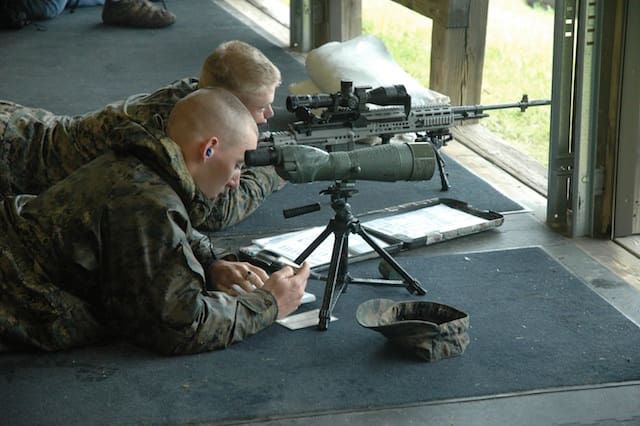Our new friends (we hope) at FNH USA are teaming up with optics maker Leupold to sponsor the 16th Long Range Precision Shooting Competition. On June 7 to 11, 2010, at Fort George G. Meade in Maryland, 30 two-man teams from the United States military and local, state and federal law enforcement will compete for honor, glory and two FN SPR A-3G rifles with Leupold scopes (the runners-up get a pair of FN SPR A-1 rifles with Leupold optics). The dynamic duos will duke it out on tactical rifle marksmanship, scouting and observational skills, and physical fitness. We’re talking “the Poker Run,” a Team Observation Exercise, a Moving Target Phase, a Cold Bore Phase, Range Estimation Exercise, Stationary Phase, a grueling Obstacle Course and Movement Phase, and an Unknown Distance Phase. Last year, in two-days of pissing rain (as the Brits would say), Officer Nate Mickle and PFC Rich McCampbell [not shown] of the Baltimore County PD SWAT took the top slot. “We create a sportsmanlike atmosphere where people can share information with each other,” Match Director Sgt. Dan Weaver told TTAG. “Even as the teams compete with each other at the highest level.” In fact . . .
Sgt. Weaver reckons the FNH competition is the most challenging sniper contest extent. And he should know. Weaver’s a world-class police sniper for the Maryland State Police. He’s won competitions around the globe. He entered the FNH competition eight times, scoring first place in ’97 (with Lt. Mike Thompson), ’99 and ’01 (with Sgt. Gary Lang).
This is Weaver’s first time as Match Director; the military man has tweaked the event to make it even harder. “I’m big into technical data,” Weaver says. “The Cold Bore event [first shot only] is new this year. The teams really have to know their weapon’s capabilities, and have a strategy in place to make it work.”
Sgt. Weaver says the FNH Long Range Precision Shooting Competition is vital to maintaining the United States’ lead in the “sniper community.” “This event makes the teams take a good hard look at their abilities . . . A good sniper team has to know exactly what it can and cannot do.”




